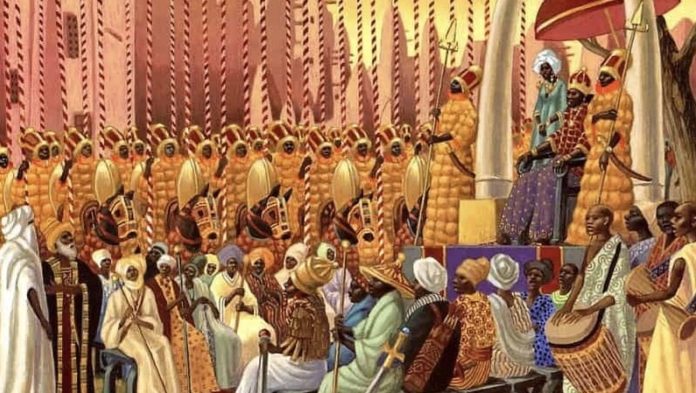Before the coming of the Europeans and even after they had started taking over some parts of Africa, the continent was ruled by some very powerful African empires which represented various kingdoms. These kingdoms have formed the basis for the claims that Africa is the mother of modern civilization.
In those times, there were many empires and kingdoms all over the African continent that had their own sophisticated structures, ranging from agricultural systems to trade systems and even complex military formations. Although Ancient Egypt is one of the most popular among the kingdoms and pioneers of civilizations that were significant and lasted for a long time, there are many others that have also left a lot to tell.
A Look At Some Very Powerful African Empires That Sustained For Decades
1. Axum Empire
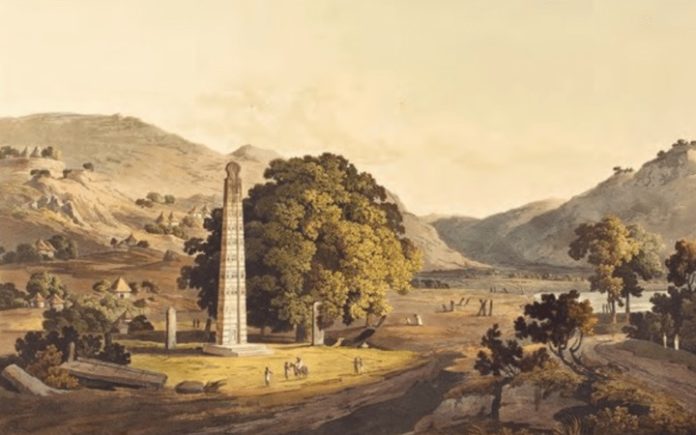
Also referred to as the Aksumite Empire Aksum is one of the oldest and biggest African empires. It occupies areas that cover modern-day Northern Ethiopia, as well as some parts of Eritrea. At the height of its powers, this empire was recognized as one of the 4 major powers of the time together with the Roman empire, China, and Persia. The Axumites were involved in farming even though they were significant players in the Romans and Ancient Indian trade as they served as the route between the two.
Also dealing in gold and Ivory, the origin of this empire is still not very clear but it became well known in the 2nd and 3rd centuries A.D. Some sources estimate that the empire has its origin from 100 CE to 960 CE. In the aspect of education, the empire was recognized for its script which is known as Ge’ez. They were also great in architecture with very tall buildings that went as high as 100 feet. More so, they accepted Christianity in the fourth century, making them one of the first empires to do so. With that, they charted a course with the Byzantines towards building a strong alliance both politically and military-wise. Some of the wars the empire fought were against the Kingdom of Kush, and it later captured Yemen among other places.
The governance of this empire was done through the absolute monarchical system and the kings described themselves as Kings of Kings. When they captured kingdoms, it was suggested that they allowed the rulers to continue ruling although their authority now came from the leaders of the empire.
By the 7th or 8th century, the empire had already started declining. This was because their fertile land began to dry out due to climate change, cutting them out of agriculture which at a point was their big strength. It was also cut out from the trading network probably as a result of its different religion, all these affected its revenue. One other thing that led to its decline among many others is the Justinianic Plague which was believed to have wiped out many of its population.
With the aforementioned conversion of the Aksumites to Christianity, they had an influence on early Christianity in Ethiopia. In fact, it was said to have laid the foundation for the Orthodox Church in Ethiopia which is also claimed to be the place where the Ark of the Covenant is currently resting in the St Mary of Zion Cathedral in the town of Aksum.
Fun Fact
The empire was finally overthrown by a female usurper, even though there is still no agreement regarding her true identity. While some believe it was the Jewish Queen named Yodit, others suggest it was the southern pagan queen named Bani al-Hamwiyah.
2. The Kingdom of Kush
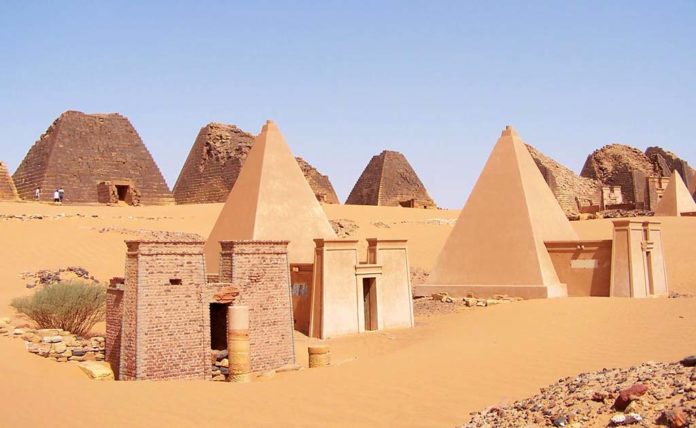
The Kush Kingdom was an ancient kingdom in Nubia which remained a massive force in Africa for thousands of years. This is in spite of the fact that it shared borders with Egypt. The kingdom had its capital in what is today known as Sudan. More so, it gained control of many areas, including the lands around the Nile regions.
The region became an important trading point for goods from different parts of the world such as the Arabian desert, the Mediterranean basin, as well as African interior. Trading here was so vast that it covered everything from animals such as elephants, antelopes, monkeys, as well as animal pelts, gold, ivory, ebony, and bronze. Other things that also formed part of the trading include olive oil, incense, and timber.
This Kushite kingdom became powerful and got to dominate through its three capitals at different points. The period within which it ruled was put at more than three thousand years and it had three capitals; Kerma, Napata, and Meroë. Between 2450 BCE and 1450 BCE, Kerma was the most powerful state. The next Kushite kingdom that emerged was from the Napata region which gave rise to Nubian pharaohs who were also referred to as the pharaohs of the Twenty-fifth dynasty. They dominated between 750 to 542 BC.
Sometime around 664 BCE, the Assyrian Empire invaded Egypt and was able to force the Nubian Pharaoh Tantamani to move to the Kushite capital of Meroë where the Kushite would rule again from 300 BCE to the 4th century CE. Before this time, the Romans gained control of Egypt and they weakened the powers of the Kush before the Axum sacked Meroe, leading to its collapse and thereby ending the Kush dominance and rule.
Fun Fact
Piye was one of the most famous leaders of the Kingdom of the Kush. He conquered Egypt and became a pharaoh. For the most, the Kushites have a similar tradition as the Egyptians, including their religious practices, mummifying their dead, and even their architecture, especially the pyramids. Also, the Kushites were expected to live for 20 to 25 years on average.
3. The Songhai Empire
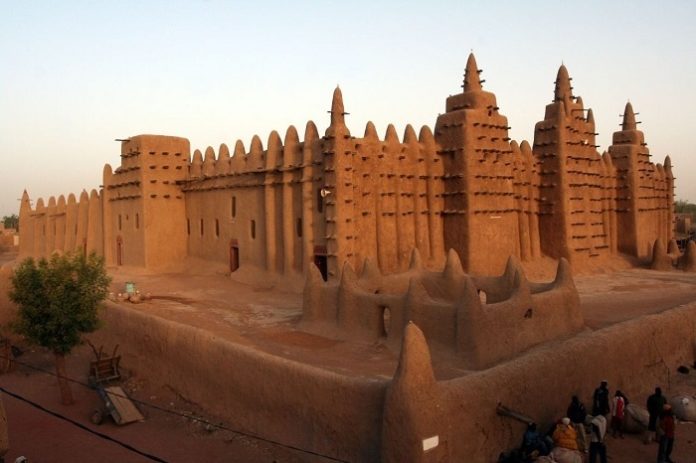
The Songhai empire is one of the most recognized around the 15th and 16th centuries when it became the dominant force in the western Sahel. One of its most prominent cities is Timbuktu. This Empire started its rise as the Mali empire was on a decline and it came to prominence for among other things being a major learning center and a home for skilled labor and also as a major player during the transatlantic slave trade. These slaves were used to transport goods to other parts of Africa such as Morocco, and they were also sold to European slave traders.
The empire got its start sometime around 800 CE when the Songhai people first established themselves in Gao, which is a city in Mali. Sunni Ali became the first leader of the empire and as the empire began its formation, it conquered many kingdoms, including the Mossi kingdoms, Dogon and Fulani, and they successfully evicted the Tuareg from Timbuktu. Also, the empire captured Djenné which is often referred to as Jenne after a seven-year siege.
The kingdom attained its height due to its well-built economic system. Its government gave the emperor absolute power even though authority was also delegated to local chiefs and it was ensured that they do not undermine the superior authority. The kingdom had five provinces controlled by the governors. There were also judges and different town chiefs.
The Kingdom finally gave way in 1592. The fall of the empire began with a civil war that followed the death of Emperor Askia Daoud and the battle for a successor. This made it possible for the Spanish-Moroccan military leader, Judar Pasha to finally conquer the once strong empire.
Fun Fact
There were two different dynasties that ruled over this empire at different times. From 1464 to 1493, the empire was ruled by the Sonni dynasty, and from 1493 until the kingdom finally gave way in 1591, it remained under the control of the Askiya dynasty.
4. The Benin Empire

Although it is easy for many to confuse the present-day Benin area of Nigeria with The Kingdom of Benin, the two are not the same. The kingdom occupied a good part of present-day Southern Nigeria. It was around the 11th century AD that the kingdom got its beginning and it rose to become an important force in West Africa, being one of the oldest and most developed Kingdoms in the hinterland.
The main rise of The Benin kingdom can be traced back to Oba Ewuare who led many military campaigns and was able to expand the kingdom. He took power from his brother, Uwaifiokun, following a bloody coup. Thanks to the expansion and reforms he brought, coupled with his expansion of the kingdom, he is considered the first true king of the Benin Empire.
It got involved in trading with the Portuguese, getting firearms in exchange for palm oil, pepper, and ivory. It also had a trading relationship with the British and the Dutch. In spite of the vastness of its trading partners both locally and with different parts of the world, the empire became more famous because of its arts through which the kingdom built its much-lasting legacy. The kingdom was ruled by the Obas.
It met its end in 1897 when it was annexed by the British kingdom. Before the kingdom was finally annexed, it had already started declining around the seventeenth century as a result of constant civil war and leadership tussle.
Fun Fact
The Benin kingdom is believed to have the best bronze casters in the world. Many of its artifacts were looted by the west and to date, some of them are still being returned. Interestingly, bronze casting still remains a practiced tradition by the Igun clan of casters on the mandate of the Oba.
5. The Mali Empire
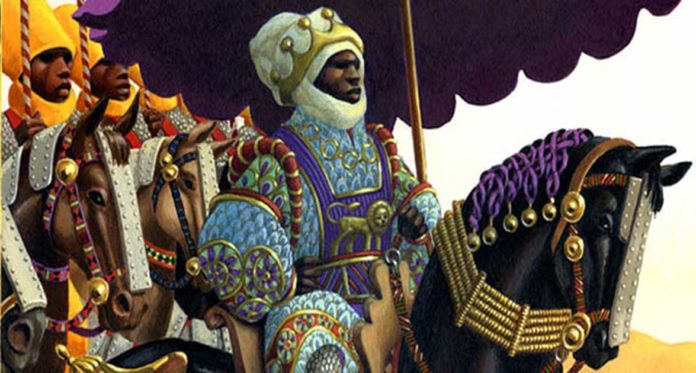
The Mali empire was first traced to 1000 CE when it was founded and it sustained from the 13th to the 16th century. Founded by Sundiata Keita, the empire was known as the Manden Kurufaba or Manden. At its peak, Mali covered places such as modern-day Mali, Mauritania, Senegal, the Gambia, as well as Guinea. It also covered some parts of the Ivory Coast, Burkina Faso, and Niger.
The empire was famous for its abundance of gold and it reached its climax during the reign of Mansa Musa I. He expanded the territory more than ever before, and thanks to this, the empire became the focal point of trading in Africa. It was during his reign that the empire’s fame and wealth grew to other parts of the world, including Europe. Apart from gold, Timbuktu increased its wealth from the imposition of a huge tax on all products coming through the capital. The death of Musa set the kingdom on a path from which it would never recover.
That said, the real decline of the empire began in 1599 under the reign of Mansa Mahmud Keita IV. In that year, he launched an attack on Morocco, with the help of the Fulanis. Unfortunately, he was met with superior firepower that forced him to withdraw after a lengthy battle that earned the Mali empire the respect of the Moroccans. The final collapse of the empire finally came after the death of Mahmud Keita IV Manden. His three sons continued to fight over his body and from then, no member of the family was able to rule Manden again, leading to the end of the empire.
There are also those that suggested that the reason for the decline of the empire was that it got to a point where the empire grew a lot bigger than its political and military might, hence, it became difficult to manage.
Fun Fact
The empire was famous for the extreme wealth of its leaders, one of whom was Musa Keita who was better known as Mansa Musa. He was one of the wealthiest persons to have ever lived as during his reign, the Mali Empire became the largest producer of gold in the entire world.
6. The Ghana Empire

The Ghana Empire is recognized as the first major empire in west Africa. It is important to note before anything else, that the empire was not situated geographically in modern-day Ghana. Instead, it is in honor of the empire that modern-day Ghana was named. Also referred to as Wagadou (or Wagadu) Empire, Ghana Empire occupied present-day Mauritania, western Mali, and eastern Senegal.
There is no historical agreement on the exact period that the empire came to be, most scholars are of the opinion that it started in the 8th or 9th century with its capital at Koumbi Saleh. There are historical records that suggested the empire had several vassal states under its rule. The government of the empire had smaller units governed by kings whose authority came from the king at the center and whose authority was absolute. The smaller traditional units that the kings oversaw were reportedly called kafu in Mandinka.
The economic growth of Ghana was linked to its place in the trans-Saharan trade in gold, salt, and ivory. More so, it has control of different trading routes, adding to its economic strength. Thanks to its economic strength, Ghana expanded its territories by capturing other lesser states such as Awdaghost, which was forced into the desert.
Just like its rise, the decline of Ghana was never fully captured. However, some scholars have reasons to believe that the decline of the empire began around the 11th century. It is believed that the fate of the empire was sealed by the Almoravid movement which sacked it. Other sources contradict this, claiming that Ghana was able to wade off the Almoravid movement, but soon started losing out due to the strain of the war which affected its economic strength on one hand, and on the other, its lands were no more fertile for agriculture due to climate change and dwindling resources.
The empire finally gave way to smaller kingdoms and chiefdoms, some of which were later instrumental in the formation of the Mali Kingdom.
Fun Fact
The kings who ruled Ghana were extremely rich. They had stockpiles of gold which they were the only ones allowed to have. The kings had a reputation that stretched to the north and the empire was considered to be a land of Gold.
7. The Kingdom of Zimbabwe
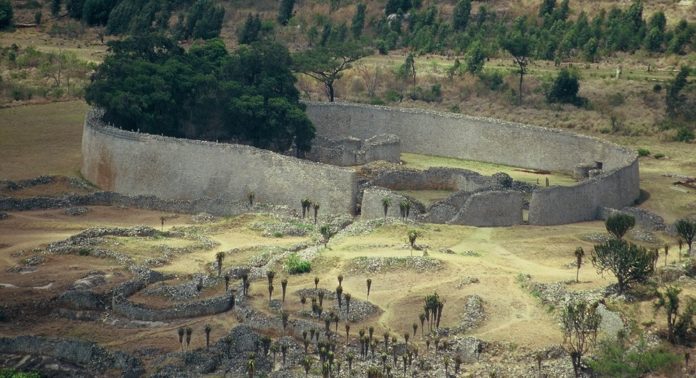
The Kingdom of Zimbabwe thrived between the 13th and 15th centuries. Located in modern-day Zimbabwe, the Kindom emerged following the demise of the Kingdom of Mapungubwe. The people from this kingdom moved North and occupied the Great Zimbabwe area, but as it continued to rise, it later ruled other parts, including a good part of Botswana and Mozambique.
The kingdom built its economy through ivory and gold trading with others in its region, as well as in the international space with places such as Persia, China, and the Arab. Apart from trading and mining, the people here were into livestock rearing. One of the most impressive things about the kingdom was its large monuments because of which the Kingdom was once associated with the Queen of Sheba. They built a great enclosure that had walls that were more than 11 m (36 ft) tall and extended to more than 250 m (820 ft). Because of all that the kingdom came to achieve, Great Zimbabwe was not attributed to the Native Africans until recent times.
The governance of the kingdom was controlled by a hereditary monarchy of Shona elite. In addition to this, the king has absolute powers over the territories. The ruler also has the support of a court that is mostly made up of the family members of the king. For regions that are far away, the kingdom appoints governors who will have their allegiance to him. In terms of uncertainties, the central powers would reside in the Great Enclosure.
The decline of the kingdom began around 1430 when Prince Nyatsimba Mutota traveled north in search of salt. There is another version of events that claim the Prince broke away from Great Zimbabwe following a war with Prince Mukwati who was said to be either his brother or cousin. In the process, he engaged Tonga and Tavara in a battle that ended in his favor. He established his dynasty which later became known as the Kingdom of Mutapa which soon became powerful while the Kingdom of Zimbabwe lost its political and military might due to the exhaustion of gold mines, famine, and political instability among other things that would lead to its final collapse in 1450.
Fun Fact
Back in 1986, the ruins of Great Zimbabwe were named by the United Nations Educational, Scientific and Cultural Organization (UNESCO) as a world heritage site. Not much archeological works were carried out here to really discover its historical past, hence, the Europeans disrespectfully believed, as stated, that the kingdom couldn’t have been built by Africans due to its sophistication. As it later turned out, the kingdom was founded and built by Africans.
8. The Kingdom of Mutapa
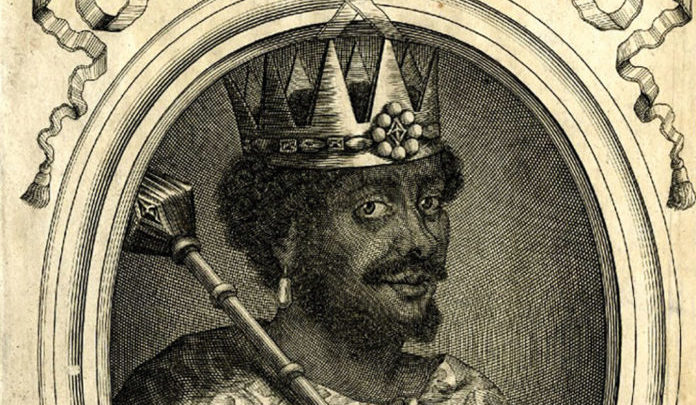
The rise of The Mutapa Empire, the period in which it lasted, and its final fall all tell interesting stories. The empire started its gradual rise as The Kingdom of Zimbabwe was declining. The empire was founded in 1430 by Nyatsimba Mutota, a prince from the Kingdom of Zimbabwe, as it is now most widely accepted. Before long, the prince was able to dwarf all that used to be the Kingdom of Zimbabwe. He pulled together different people from a good part of Southern Africa under his control. It is stated that if put together, the areas he controlled could make up for 6 Southern African nations.
The kingdom defeated many other kingdoms upon its rise, including the kingdom of the Manyika and the kingdoms of Kiteve and Madanda. One of the interesting ways in which this kingdom was built is that membership was offered to kingdoms and empires that joined voluntarily. Through this, the kingdom had diverse cultures under it and it was able to build a strong and sophisticated military.
In terms of the governance of the kingdom, there was no centralized system that controlled the administration of the governors. Hence, the selection process was reserved for the ruler of the kingdom who appoints family members and trusted loyalists into different positions of authority. The issue the kingdom faced was with the death of any king, all governors had to leave power so that the new king would appoint his people into positions of authority. This is responsible for most of the civil wars experienced in the kingdom since not all the kings would willingly want to give up power. The king is referred to as Mwene Mutapa and he has control as an absolute monarch.
The Kingdom of Mutapa traded in gold, ivory, copper, and animal hides, as well as glass beads and embroidered textiles from India. The kingdom was also said to have traded in slaves. By 1498-9 CE, the Portuguese had started establishing their presence in the coastal areas and they got to trade with the kingdom. All attempts at getting involved in the internal trading failed and so in 1633 CE, they decided to cut off the Swahilis who they were trading with and invade the Kingdom of Mutapa. However, they realized there was no gold as they had expected, they left the kingdom which was finally taken over by Batua.
Fun Fact
The king sought the advice of nine ministers when there was a need. These ministers were also referred to as the king’s wives. Interestingly, these ministers were neither all the wives of the king nor were they all even women. However, it is stated that the queen and probably the king’s sister were also a part of the ministers.
9. The Kingdom of Kongo

This Kingdom of Kongo is also among the most powerful African kingdoms in the past. Covering what is today known as the Angola, DR Congo, and the Republic of Congo regions, the roots of the kingdom were traced to the 14th century. The birth of the kingdom came after the alliance between the two KiKongo speaking peoples following the marriage between the Nima a Nzima and Luqueni Luansanze, of the Mbata.
The kingdom was able to establish itself with an economy that was powered by trading in ivory, textile, copper, and pottery among other things. More so, it was later also involved in slave trading. It continued to expand through the conquering of other smaller kingdoms such as the Kingdom of Loango, even though many other smaller territories voluntarily joined the kingdom. Looking at this, some historians have suggested that the territories of the kingdom that voluntarily joined were more of commonwealths that came about as a result of mutual agreements. This does not apply to conquered territories such as Mpangu and Npundi which were ruled by governors who received orders from the king.
One of the issues that the kingdom faced was as regards succession which was often disputed. Because of this, the kingdom was once overrun by the Jagas, who were regarded as warriors from the east before it was later reclaimed with the help of the Portuguese. The alliance between the Kongos and Portuguese soon suffered following the invasion of the southern Kongo by the latter. Kongo was forced to fight many wars such as the Battle of Mbwila which was a war against the Portuguese over a district known as Mbwila. Kongo lost this battle, heralding its fall as even though the kingdom continued to exist, it was no more as a united entity.
Fun Fact
In 1482, the King of Kongo, King Nzinga a Nkuwu came in contact with the Portuguese, and eight years later, he converted to Christianity. This began the Christianisation of the kingdom, although conflict would continue to ensue over religion in Kongo.
Aksumite Empire Is The Oldest Empire In Africa
Although what could be termed as the oldest known empire in Africa is still a subject of debate, there is a strong case that suggests it is the Askumite Empire which is sometimes referred to as the Kingdom of Aksum – that is the oldest on the continent. This is because it dates back to approximately 100 CE – 960 CE according to some sources.
There are also those that have speculated that the Ghana Empire could also be the oldest in Africa, but a lot of things, most especially as regards the dates of Ghana’s existence have been strongly debated, including the rise of the empire and also its fall.
Unlike the Egyptian civilization which is known to be the oldest not only in Africa but also in the world, there is hardly a way of finding out what the oldest empire in Africa is with detailed accuracy since there are no captured historical records for many of the empires in their earliest stages. Most others have depended on archelogy to provide what is close to actual information regarding their rise, dominance, and fall.
What Happened To The African Empires?
Africa has seen some empires that at their height, they became famous all over the world, such as the Mali Empire and Songhai Empire, among others. The empires dominated trade, built and sustained great military forces, conquered and captured territories, and even formed strong political systems. However, all these were not enough to keep the empires from finally crumbling as a result of many diverse and sometimes similar reasons.
The fall of most of the African empires happened as a result of weakened military systems which allowed for such empires to be brought down by stronger forces that would later become kingdoms or even empires. There are also several case studies of empires that fell as a result of internal instability following the fight for power or even internal civil wars.
Another major reason behind the decline and total collapse of many African empires was the loss of their economic strength, mostly as a result of the loss of the source of their revenue which could be agriculture or even a trading territory. When the different empires started experiencing a decline in their revenue, they slowly began to decline since they can no longer finance their usually large territories and military might.
Contact with the Europeans also led to the fall of some other African kingdoms and empires as they were taken over by colonial masters who came to the continent for things such as gold, oil, and rubber after the slave trade had been abolished.
